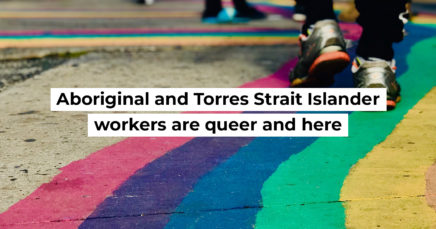From 1862-68, local Aborigines worked ‘dry shelling’ without wages, collecting oysters in the shallow waters of Shark Bay. Within three years, the supply was so low that larger boats were sent out two kilometres off shore to collect oysters in deep water. Six to eight Aboriginal men and women in a boat would ‘naked dive’ for shell. This meant they had to dive down deep with no oxygen, no snorkel and no mask.
In the Torres Strait, employment conditions were regarded as dangerous as well as ‘unspeakably squalid and dirty’ and contributed to a high degree of accident and death. (John Singe, The Torres Strait: People and History, 1979) Attempts to regulate the marine industry and to prevent improper employment of Aborigines and Islanders were made by the Queensland parliament and wages were required to be paid in front of an inspector after 1893.
Aboriginal pearl divers
Aboriginal pearl divers, late 19th century.
The invention of diving suits revolutionised the pearling industry in Australia. Not only could divers go deeper than ever before, they could also stay underwater longer and collect more shell and pearls. These divers wore vulcanised canvas suits and massive bronze helmets and were lowered over the boat’s side to spend hours underwater.
On the bottom they struggled about in lead-weighted boots, often almost horizontal as they peered through inch-thick faceplates into murky waters, frantically scooping oysters into bags because divers were paid by the amount of shell they collected.
(Pearling History)
As the work was very dangerous, the European boat owners employed mostly Japanese divers. Many of the Japanese divers were used as indentured labour. This means that they were working for no money in order to repay a debt, usually their transportation to Australia. Divers were paid by the amount of shell they collected and because of the dangers involved, very few of these divers ever managed to work off their debt.
Pearl divers regularly faced the threat of shark attack as well as the dreaded crippling effects of the bends with every dive. Some sources say that the mortality (death) rate for divers was 50%. In addition, whole fleets were shipwrecked in single cyclones. Between 1908 and 1935, four cyclones hit the pearling fleet at sea. Around 100 boats were destroyed and 300 men were killed.



